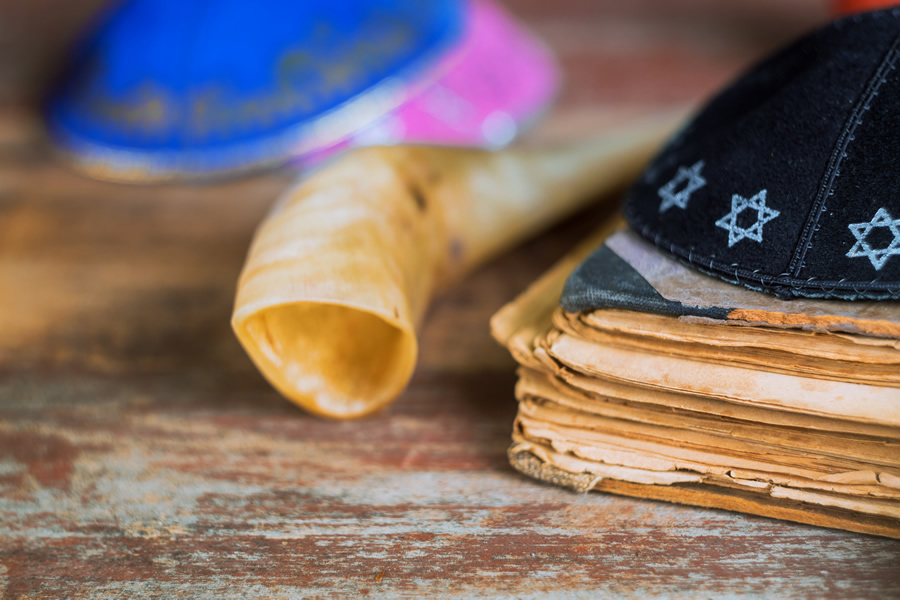
The Jewish feasts of Passover, Yom Kippur, and Christ
10-04-2020Weekly ReflectionAccording to the plan of our Lord the Catholic religion is the fulfillment of the promises made to Abraham and the fulfillment of the Law and the Prophets. This is exemplified by the fulfillment of two major Jewish feast days: the Passover and Yom Kippur, the Day of Atonement. We hear the Passover recalled during Lent and this involved the deliverance of the people of Israel from slavery in Egypt and to be brought to the Promised Land. Christian commentary views this as also pointing to the deliverance of the human race, Jews and Gentiles, from the slavery to sin and set on the road to the Promised Land of intimacy and friendship with God in the life of heaven. The crossing of the Red Sea and the passing through its waters is seen as a sign of baptism, the entry-point of this deliverance from sin.
Intimately involved in the Passover liturgy was the use of a year-old unblemished lamb, with no bones broken, to be consumed as a sign of God’s deliverance of his people from slavery. Jesus becomes the Passover Lamb and He is referred to in this manner in the Gospel (John 1:29) and in the sacrifice of the Mass. Jesus uses the Passover liturgy to institute the sacrifice of the Mass where bread and wine become Jesus Himself as the Passover Lamb to be consumed by His people as the actual deliverance from the slavery to sin and newness of life with God. Note this is why Jesus’ bones could not be broken on the Cross. (John 19:36) Jesus is the true unblemished Lamb of God, God’s own Son. Jesus is also the Great High Priest and is Priest from the first moment of the Incarnation. He is not a priest according to Moses’ brother Aaron but a priest according to the order of Melchizedek. (Hebrews 7:13-17) On the cross Jesus our Priest completes the first Mass as He hands over His life to His Father bearing our sins and the penalty of our sins. No one takes His life. (John 10:18) He hands over His life freely as Priest when the Father says it is time.
In this manner Jesus fulfills the meaning of Yom Kippur the Day of Atonement. See the Letter to the Hebrews Chapter 9. The Gospel notes, that when Jesus hands over His life to the Father, the curtain in the temple split in half (Mark 15:38) to indicate that the meaning of the Day of Atonement is fulfilled in Jesus the Messiah and He is now the temple and the real atonement and forgiveness of sins for all time. Jesus’ Heart is opened on the cross as the curtain of the temple of His Body for all to enter and meet God the Blessed Trinity for intimacy with Him and the forgiveness of sins. The liturgy of Yom Kippur involved the High Priest sacrificing a bull for his own sins and then sacrificing one of two goats for the sins of the people. The blood is then brought behind the curtain of the Holy of Holies to be placed on the mercy-seat, the covering of the Ark of the Covenant with the two angels hovering over it.
The Holy of Holies was the place of God’s special Presence for His People. Then outside of the temple area a scapegoat is brought and the High Priest places his hands over the goat and symbolically casts the people’s sins onto the goat and the animal is driven out into the desert. This was the scapegoat. Jesus is the High Priest and the temple and the mercy-seat. Onto Him God the Father actually placed all the sins of the human race (1 Peter 2:24) in the Garden of Gethsemane and Jesus as priest atones for these sins and provides the path to forgiveness of sin for the human race who accept Him.
Hence each Mass is the fulfillment of the Passover and Yom Kippur the Day of Atonement every time it is celebrated. Confession points to this sacrifice because the forgiveness of sins that take place there they are already paid for by the sacrifice of Christ on the Cross. Each Mass celebrated makes this sacrifice present for Christ’s Church. The synagogue-service, which involves the readings of the Law and Prophets, explanation of the readings, and prayer and petitions of God’s people, was taken over by the Church and this is the first part of every Mass. Hence the Jewish of tradition of temple and synagogue is fulfilled in Christ in the worship of the Church in the sacrifice of the Mass.
BACK TO LIST